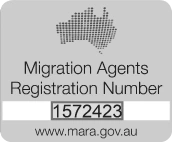
2022’s most important immigration changes in Australia
2022’s most important immigration changes in Australia
In response to the need for workers in different industries, Australia has experienced a series of migratory changes that have helped the country recover economically. The unemployment rate in Australia dropped to 3.5% in 2022, which means that almost all of its citizens are currently employed, which is great news for everyone.
International students and skilled migrants seeking permanent residence in Australia have largely benefited from these changes as well.
In order to provide you with a clear picture of all the immigration options that are currently available in all Australian states, Questra Immigration has created this amazing summary of what happened in 2022 in terms of immigration. You can evaluate immigration changes this way and identify their advantages.
1. Temporary Graduate (Subclass 485):
In the next twelve months, any applicant holding a Student Visa and meeting the Australian study requirement can apply for a Temporary Graduate Visa (Subclass 485) without completing a skills assessment or nominating an occupation on the list of skilled occupations.
- In order to qualify, an applicant must have successfully completed all the course requirements during the last two years of study (92 weeks).
- These qualifications can be a Bachelor degree, vocational certificates or diplomas and trade certificates.
- The applicant must also apply within six months of completing the course – and before 30 June 2023.
Book a Free 15 min consultation to verify your eligibility for the 485 visa here.
2. Permanent residence pathways for Temporary Skill Shortage (Short-term stream) and Temporary Work (Skilled) visa holders
Prior to July 1, 2022, Temporary Skill Shortage or TSS visa holders whose occupations were listed on the short-term skills occupation list were not eligible for permanent residency in Australia. However, from 1 July, Australian Migration offers skilled workers new pathways to permanent residency through ENS visa subclass 186 Temporary Residence Transition stream.
The employer will be able to nominate a short-term subclass 482 TSS visa holder in a two-year occupation for permanent residence under the 186 visa if the employee:
- Have been in Australia for at least 12 months between 1 February 2020 and 14 December 2021; and
- Meets the general 186 visa criteria under the 186 temporary transition stream;
- Works for the sponsor employer while holding 482 visa;
- Have been working with the sponsor employer for a minimum of 3 years.
Book a Free 25 min consultation to verify your eligibility for the TSS visa here.
3. Key skilled migration updates:
The cap for 2022-23 permanent skilled migration has been raised to 195,000 from 160,000 places
This resulted in 34,000 places in the regions for this year, i.e. 9,000 more than the formerly announced.
Structuring a big lift under the state and territory sponsored visas – from 11,000 previous year to 31,000 in 2022-23.

4. Victoria’s Migration changes
- Offshore applicants are eligible to apply.
- No requirements for onshore applicants to be using STEMM skills or working in a target sector.
- Onshore applicants must be employed and working in Victoria.
- All occupations that are on the eligible skilled occupation list are being considered.
5. New South Wales Migration Changes
- There will be minimum requirements for skilled work experience in all unit groups. To qualify for NSW nomination, each unit group will have a minimum point score, these minimums will be included in the NSW Skilled Nominated Skills List.
- NSW nominations for the Skilled Nominated visa 190 are by invitation only. Since NSW nomination demand exceeds the number of available places, you must consider all other migration pathways, rather than waiting for an invitation from NSW.
- Two pathways will be available for NSW nomination for the 491 Visa this fiscal year. For both pathways, the eligibility criteria are the same.



 On the 10th edition of these live events of the year, our registered migration agent will explain in detail the Graduate Visa (485).
On the 10th edition of these live events of the year, our registered migration agent will explain in detail the Graduate Visa (485).





Recent Comments